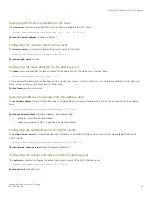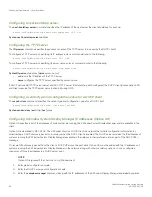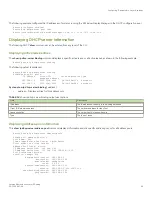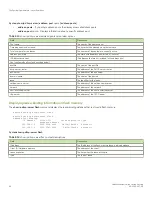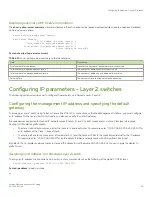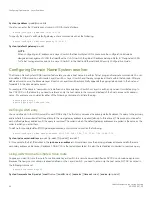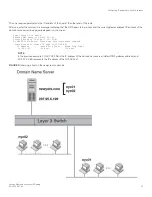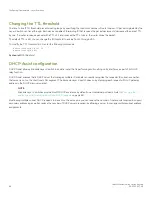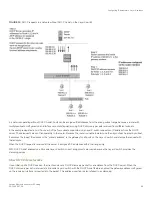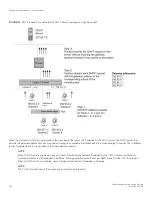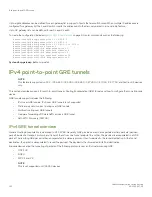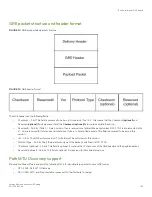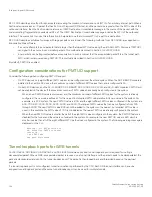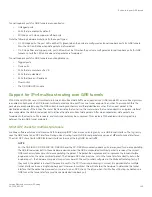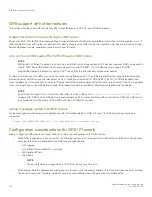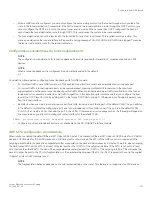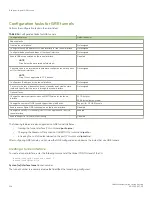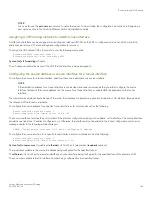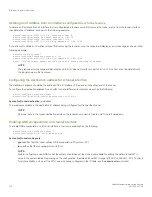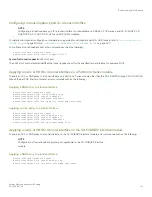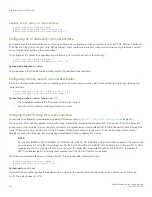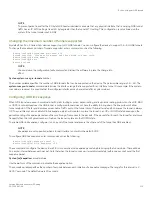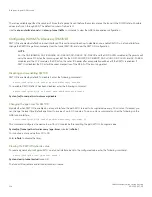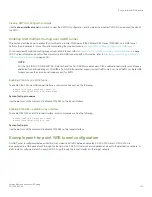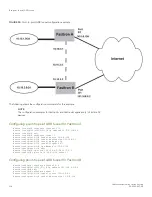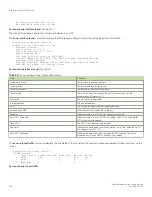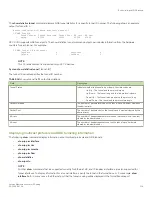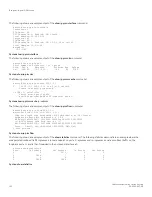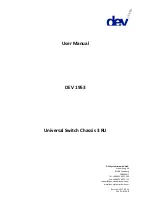
Tunnel loopback ports for GRE tunnels are supported on:
•
Untagged ports
•
Ports that are enabled by default
•
10 Gbps and 1 Gbps copper and fiber ports
Note the following hardware limitations for these port types:
•
On 10 Gbps ports, the port LEDs will be ON (green) when the ports are configured as tunnel loopback ports for GRE tunnels.
Also, the LEDs will blink when data packets are forwarded.
•
On 1 Gbps fiber and copper ports, port LEDs will not be ON when the ports are configured as tunnel loopback ports for GRE
tunnels, nor will the LEDs blink when data packets are forwarded.
Tunnel loopback ports for GRE tunnels are
not
applicable on:
•
Tagged ports
•
Trunk ports
•
Ports that are members of a VE
•
Ports that are disabled
•
Ports that have an IP address
•
Flow control
•
The SX-FI48GPP module
Support for IPv4 multicast routing over GRE tunnels
PIM-DM and PIM-SM Layer 3 multicast protocols and multicast data traffic are supported over GRE tunnels. When a multicast protocol
is enabled on both ends of a GRE tunnel, multicast packets can be sent from one tunnel endpoint to another. To accomplish this, the
packets are encapsulated using the GRE unicast tunneling mechanism and forwarded like any other IPv4 unicast packet to the
destination endpoint of the tunnel. The router that terminates the tunnel (i.e., the router where the tunnel endpoint is an ingress interface)
de-encapsulates the GRE tunneled packet to retrieve the native multicast data packets. After de-encapsulation, data packets are
forwarded in the direction of its receivers, and control packets may be consumed. This creates a PIM-enabled virtual or logical link
between the two GRE tunnel endpoints.
Strict RPF check for multicast protocols
IronWare software enforces strict Reverse Path Forwarding (RPF) check rules on an (s,g) entry on a GRE tunnel interface. The (s,g) entry
uses the GRE tunnel as an RPF interface. During unicast routing transit, GRE tunnel packets may arrive at different physical interfaces.
The strict RPF check limits GRE PIM tunnel interfaces to accept the (s,g) GRE tunnel traffic.
NOTE
For the SX-FI624C, SX-FI624P, SX-FI624HF, and the SX-FI62XG modules loopback ports are required for de-encapsulating
the GRE tunneled packet. On these hardware devices, when the GRE-encapsulated multicast packet is received, the unicast
GRE mechanism takes care of de-encapsulating the packet. The packet then egresses and re-ingresses the tunnel interface
loopback port as the native multicast packet. The hardware RPF check is done, not on the tunnel interface directly, but on the
loopback port - the hardware compares this port number with the port number configured in the Multicast table (s,g) entry. If
they match, the packet is routed. Otherwise it is sent to the CPU for error processing. In unicast, it is permissible for multiple
tunnel interfaces to use a single loopback port. However, in multicast, this will not allow the hardware to determine the tunnel
interface that the packet was received on in order to do an RPF check. Therefore, when IPv4 Multicast Routing is enabled on a
GRE tunnel, the tunnel interface must have a dedicated loopback port.
IPv4 point-to-point GRE tunnels
FastIron Ethernet Switch Layer 3 Routing
53-1003627-04
105
Summary of Contents for FastIron SX 1600
Page 2: ...FastIron Ethernet Switch Layer 3 Routing 2 53 1003627 04 ...
Page 16: ...FastIron Ethernet Switch Layer 3 Routing 16 53 1003627 04 ...
Page 20: ...FastIron Ethernet Switch Layer 3 Routing 20 53 1003627 04 ...
Page 142: ...FastIron Ethernet Switch Layer 3 Routing 142 53 1003627 04 ...
Page 150: ...FastIron Ethernet Switch Layer 3 Routing 150 53 1003627 04 ...
Page 200: ...FastIron Ethernet Switch Layer 3 Routing 200 53 1003627 04 ...
Page 214: ...FastIron Ethernet Switch Layer 3 Routing 214 53 1003627 04 ...
Page 350: ...FastIron Ethernet Switch Layer 3 Routing 350 53 1003627 04 ...
Page 476: ...FastIron Ethernet Switch Layer 3 Routing 476 53 1003627 04 ...
Page 588: ...FastIron Ethernet Switch Layer 3 Routing 588 53 1003627 04 ...

